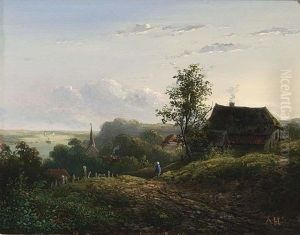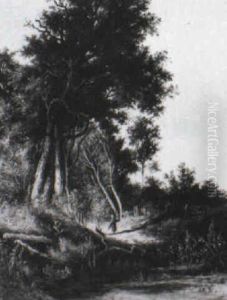Arend Cornelis Hazeu Paintings
Arend Cornelis Hazeu, often remembered for his contributions to the Dutch art scene, was born in 1918 in the Netherlands. His life and career spanned a significant part of the 20th century, a period marked by immense changes and evolutions in the world of art. Hazeu was not only a witness to these transformations but also an active participant through his creative endeavors. Though not as widely recognized as some of his contemporaries, his work has garnered appreciation for its unique approach and the sensitivity with which he explored his subjects.
Hazeu's early life was steeped in an environment that encouraged artistic exploration. The specifics of his education and early influences, though not extensively documented, suggest that he was part of a milieu that was deeply engaged with the artistic movements of the time. His work, which evolved over the years, displayed a keen understanding of both traditional and modernist principles, allowing him to navigate through different styles while maintaining a distinctive voice.
During his career, Arend Cornelis Hazeu engaged with various forms of artistic expression but was particularly noted for his contributions to painting and illustration. His art often reflected a deep introspection and a contemplative approach to themes such as nature, human emotions, and the complex interplay between light and shadow. Hazeu’s ability to capture the subtleties of his subjects with a nuanced palette and thoughtful composition won him accolades among his peers and art enthusiasts alike.
Despite the quality and depth of his work, Hazeu remained somewhat on the periphery of the leading art movements of his time. This, however, did not diminish his commitment to his art nor his productivity. Throughout his life, he continued to experiment and refine his craft, contributing quietly but significantly to the Dutch art scene. His legacy, though understated, is preserved in the collections of those who recognized the value of his work during his lifetime, as well as in the posthumous appreciation that has grown over the years.
Arend Cornelis Hazeu passed away in 1982, leaving behind a body of work that continues to inspire and intrigue art lovers and historians. His life and art reflect a dedication to exploring the boundaries of expression and a deep-seated belief in the power of visual art to communicate complex human experiences. As more scholars and enthusiasts discover and revisit Hazeu’s contributions, his place within the broader narrative of 20th-century Dutch art continues to be reassessed and celebrated.



